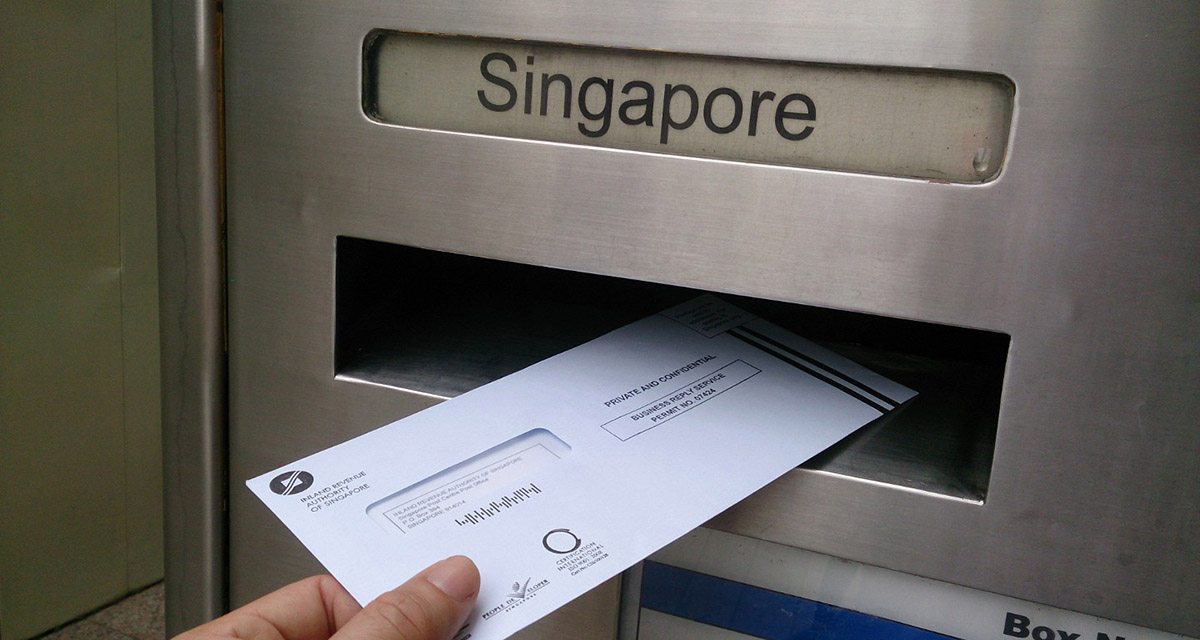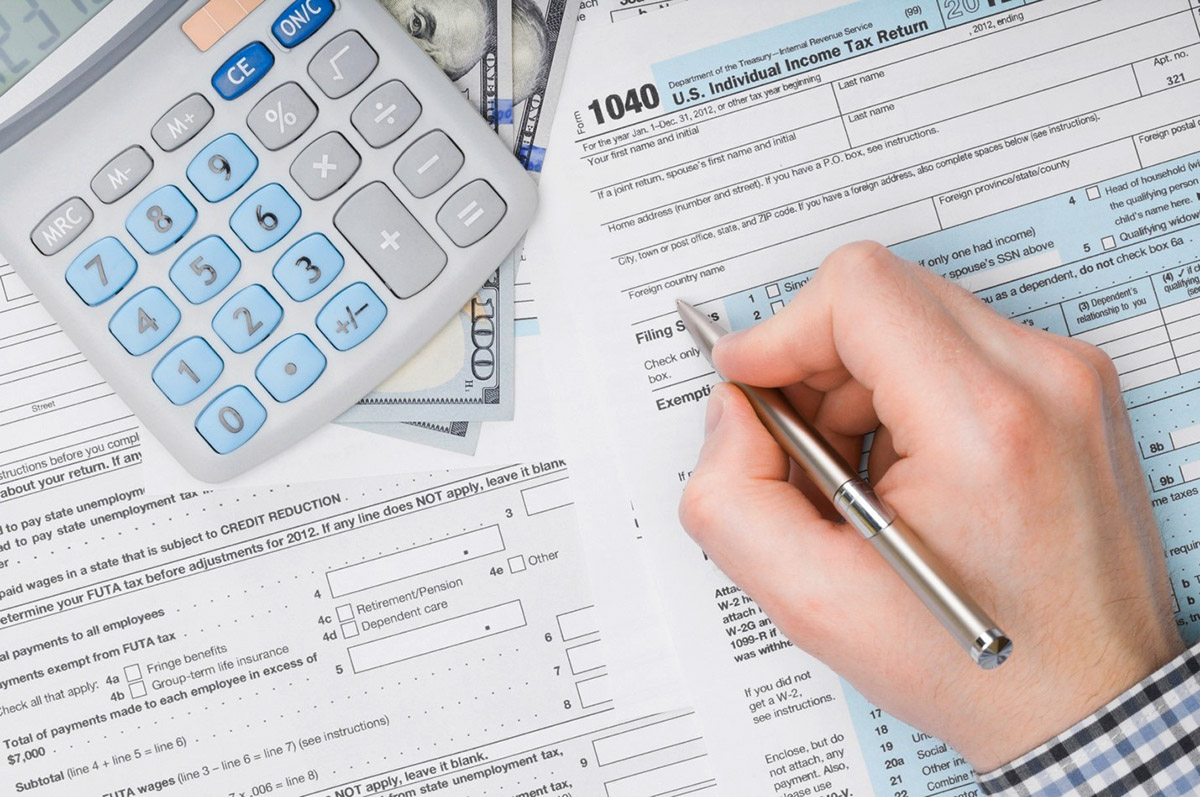

Finance
Where Does 1099-Sa Go On A Tax Return
Published: October 29, 2023
Learn where to report your 1099-SA on your tax return and get expert guidance on finance-related matters.
(Many of the links in this article redirect to a specific reviewed product. Your purchase of these products through affiliate links helps to generate commission for LiveWell, at no extra cost. Learn more)
Table of Contents
Introduction
When it comes to filing taxes, it is important to understand the various forms and documents that you may receive throughout the year. One such form is the 1099-SA, which is provided by financial institutions and health savings account (HSA) administrators to report distributions made from HSAs, Archer MSAs, or Medicare Advantage MSAs. Knowing where to report the information from Form 1099-SA on your tax return is crucial in ensuring accuracy and avoiding any potential penalties.
Form 1099-SA provides details about the distributions you received from your HSA or MSA during the tax year. This includes distributions used for qualifying medical expenses or any other non-qualified distributions made from the account. It is important to note that qualified medical expenses are tax-free, while non-qualified distributions may be subject to income tax and possibly an additional penalty if you are under the age of 65.
Understanding the implications of Form 1099-SA and the proper way to report its information on your tax return will help ensure compliance with IRS regulations and maximize your tax benefits. In this article, we will delve into the specifics of reporting Form 1099-SA on your tax return, providing a comprehensive guide to help you navigate through the process.
Understanding Form 1099-SA
Form 1099-SA is a tax form that reports the distributions made from certain types of medical savings accounts. It is typically issued by financial institutions or HSA administrators to account holders who have made withdrawals or distributions from their accounts during the tax year. The purpose of this form is to provide the account holder with a summary of their HSA or MSA distributions and to report this information to the IRS.
There are different types of accounts that may generate Form 1099-SA. These include Health Savings Accounts (HSAs), Archer Medical Savings Accounts (Archer MSAs), and Medicare Advantage Medical Savings Accounts (Medicare Advantage MSAs). While each account type operates differently, they all share the common goal of helping individuals save for qualified medical expenses.
The 1099-SA form captures important information related to the distributions made from these accounts. This includes the total amount distributed, any earnings on the account, and whether the distribution was used for qualified medical expenses or not. It is important to carefully review the form to ensure accuracy and to cross-reference it with your own records to verify the information provided.
Form 1099-SA is also useful for tax planning purposes. It allows account holders to track their medical expenses and ensure they are using their HSA or MSA funds for qualified purposes. Additionally, it helps individuals keep records of any non-qualified distributions, which may be subject to income tax and potentially an additional penalty if you are under the age of 65.
Having a clear understanding of Form 1099-SA and the information it provides will help you accurately report your HSA or MSA distributions on your tax return. This will not only keep you in compliance with IRS regulations but also ensure that you are taking advantage of the tax benefits associated with these accounts.
Reporting Form 1099-SA on a Tax Return
When it comes to reporting Form 1099-SA on your tax return, it is essential to understand which tax forms to use and where to include the information. The specific forms you will need to complete depend on the type of tax return you are filing and the nature of your HSA or MSA distributions.
If you are using Form 1040, the most common individual tax return form, you will need to report the information from Form 1099-SA on Schedule 1. However, if you are using Form 1040A or Form 1040EZ, you will not need to file Schedule 1.
On Schedule 1, you will see a section labeled “Additional Income and Adjustments to Income.” Here, you will report the distributions from your HSA or MSA as additional income. This ensures that the IRS is aware of the funds you have withdrawn from your account during the tax year.
When completing Schedule 1, you will need to include the total distribution amount from Form 1099-SA on line 5. If the distribution was used for qualified medical expenses, it is generally not considered taxable income and should not be included in your total income. However, if any part of the distribution was used for non-qualified expenses, you will need to report the non-qualified portion as income.
It is important to carefully review the information provided on Form 1099-SA and ensure that it aligns with your own records. If you believe there is an error on the form, you should contact the financial institution or HSA administrator that issued it to request a correction.
By accurately reporting the information from Form 1099-SA on your tax return, you can ensure that you comply with IRS regulations and avoid any potential penalties or audits. It is always recommended to consult with a tax professional or use tax software to ensure accuracy and maximize your tax benefits.
Where to Include Form 1099-SA on IRS Form 1040
When filing your taxes using IRS Form 1040, it is crucial to know where to include the information from Form 1099-SA. This will ensure that you accurately report your HSA or MSA distributions and comply with IRS regulations.
The section of Form 1040 where you will report Form 1099-SA information depends on whether you are using the standard deduction or itemizing your deductions.
If you are using the standard deduction, you will need to include the amount of your HSA or MSA distributions on line 21 of Form 1040. This line is labeled “Other income” and is used to report any income that is not categorized elsewhere on the form.
If you are itemizing deductions, you will need to report your HSA or MSA distributions on line 8 of Schedule A. This line corresponds to “Other Taxes” and includes any additional taxes or payments that are not covered in other sections of the schedule.
It is important to remember that if any part of your HSA or MSA distribution was used for qualified medical expenses, that portion is generally not considered taxable income and should not be included in your total income. Only the portion of the distribution used for non-qualified expenses should be reported as income.
It is crucial to accurately report the information from Form 1099-SA on your tax return. Any discrepancies may result in an IRS audit or penalties. Be sure to carefully review the information provided on the form and consult with a tax professional if you have any questions or concerns.
By correctly reporting your HSA or MSA distributions on Form 1040, you can ensure that you are in compliance with IRS guidelines and maximize your tax benefits. Remember to keep a copy of Form 1099-SA for your records and retain any supporting documentation related to your HSA or MSA distributions.
Reporting Distributions from Form 1099-SA on Schedule 1
When it comes to reporting the distributions from Form 1099-SA on your tax return, one of the key forms to consider is Schedule 1. This form is used to report additional income and adjustments to income that may not be included on the main tax form.
If you receive a Form 1099-SA, you will need to report the distributions from your HSA or MSA on Schedule 1. This is necessary to provide the IRS with an accurate summary of your income, including any funds withdrawn from your medical savings account during the tax year.
On Schedule 1, you will find a section titled “Additional Income and Adjustments to Income.” It is within this section that you will report the information from Form 1099-SA. Specifically, you will disclose the total distribution amount on line 5. This figure represents the total amount withdrawn from your HSA or MSA during the year.
If the distribution from your medical savings account was used for qualified medical expenses, you generally do not need to include that amount as taxable income. However, if any portion of the distribution was used for non-qualified expenses, you will need to report the non-qualified portion as income.
It is important to carefully review the information provided on Form 1099-SA to ensure its accuracy. If you believe there is an error on the form, it is recommended that you reach out to the financial institution or HSA administrator that issued it to request a correction.
By accurately reporting the distributions from Form 1099-SA on Schedule 1, you can ensure that you comply with IRS regulations and avoid potential penalties or audits. It is always prudent to consult with a tax professional or utilize tax software to ensure accuracy and maximize your tax benefits.
Remember to keep a copy of Form 1099-SA and any supporting documentation related to your HSA or MSA distributions for your records. This will help support the information reported on your tax return in case of any future inquiries or audits from the IRS.
Including Form 1099-SA Information on Schedule A
For taxpayers who choose to itemize their deductions rather than taking the standard deduction, Schedule A is a crucial form to consider. It allows you to claim various deductions, including medical expenses. If you have received Form 1099-SA for distributions from your HSA or MSA, you will need to include that information on Schedule A.
On Schedule A, you will find a section specifically designated for medical and dental expenses. Here, you can list your qualifying medical expenses, including those that were paid for using distributions from your HSA or MSA. It is important to note that qualifying medical expenses must meet certain criteria set by the IRS. Examples of eligible expenses include doctor’s visits, hospital fees, prescription medications, and certain medical treatments.
When including information from Form 1099-SA on Schedule A, you will need to report the total amount of distributions used for qualified medical expenses. However, if any portion of the distribution was used for non-qualified expenses, that portion should not be included as a deductible medical expense.
While including information from Form 1099-SA on Schedule A can help lower your taxable income, there is a threshold to meet before you can claim medical expenses as a deduction. The total amount of eligible medical expenses must exceed a certain percentage of your adjusted gross income (AGI) in order to be deductible. The threshold generally changes each tax year, so it’s important to check the updated guidelines provided by the IRS.
If your total medical expenses do meet the IRS threshold, you can include them as a deduction on Schedule A. This deduction can help reduce your taxable income and potentially increase your tax refund or lower your tax liability.
However, it is important to understand that there are limitations and restrictions on claiming medical expense deductions, so it is advisable to consult with a tax professional or utilize tax software to ensure compliance with IRS regulations and optimize your deductions.
By including Form 1099-SA information on Schedule A and properly documenting your medical expenses, you can potentially reduce your overall tax liability and maximize your savings. Be sure to keep a copy of Form 1099-SA and any supporting documentation related to your medical expenses for your records.
Other Considerations When Reporting Form 1099-SA
When it comes to reporting Form 1099-SA on your tax return, there are a few additional considerations to keep in mind. These include understanding the tax implications of HSA or MSA distributions, knowing the deadlines for filing your tax return, and keeping thorough records for documentation purposes.
First and foremost, it is important to understand the tax implications of the distributions you received from your HSA or MSA. If the distribution was used for qualified medical expenses, it is generally not considered taxable income. However, if any part of the distribution was used for non-qualified expenses, that portion may be subject to income tax and potentially an additional penalty if you are under the age of 65. Make sure to accurately report these amounts based on the information provided on Form 1099-SA.
Next, it is crucial to be aware of the deadlines for filing your tax return. The deadline for most individual tax returns is typically April 15th of each year. However, if that date falls on a weekend or a holiday, the deadline may be extended. It’s important to check the specific deadline for the tax year in question to ensure you file your return on time and avoid any late-filing penalties.
Additionally, it is highly recommended to keep thorough records and documentation related to your HSA or MSA distributions. This includes retaining copies of Form 1099-SA, any receipts or invoices for qualified medical expenses, and any other supporting documentation. These records will be useful in case of an IRS audit or if you need to refer back to the information for future purposes.
Finally, it is worth noting that tax laws and regulations are subject to change. It is always a good idea to stay updated on any updates or revisions that may impact the reporting of Form 1099-SA on your tax return. This can be done by consulting tax professionals, subscribing to reliable tax resources, or utilizing tax software that incorporates the latest tax laws and regulations.
By considering these factors and taking the necessary steps to accurately report Form 1099-SA on your tax return, you can ensure compliance with IRS regulations and maximize your tax benefits. If you have any specific concerns or complex situations, it is advisable to consult with a tax professional to receive personalized advice and guidance.














